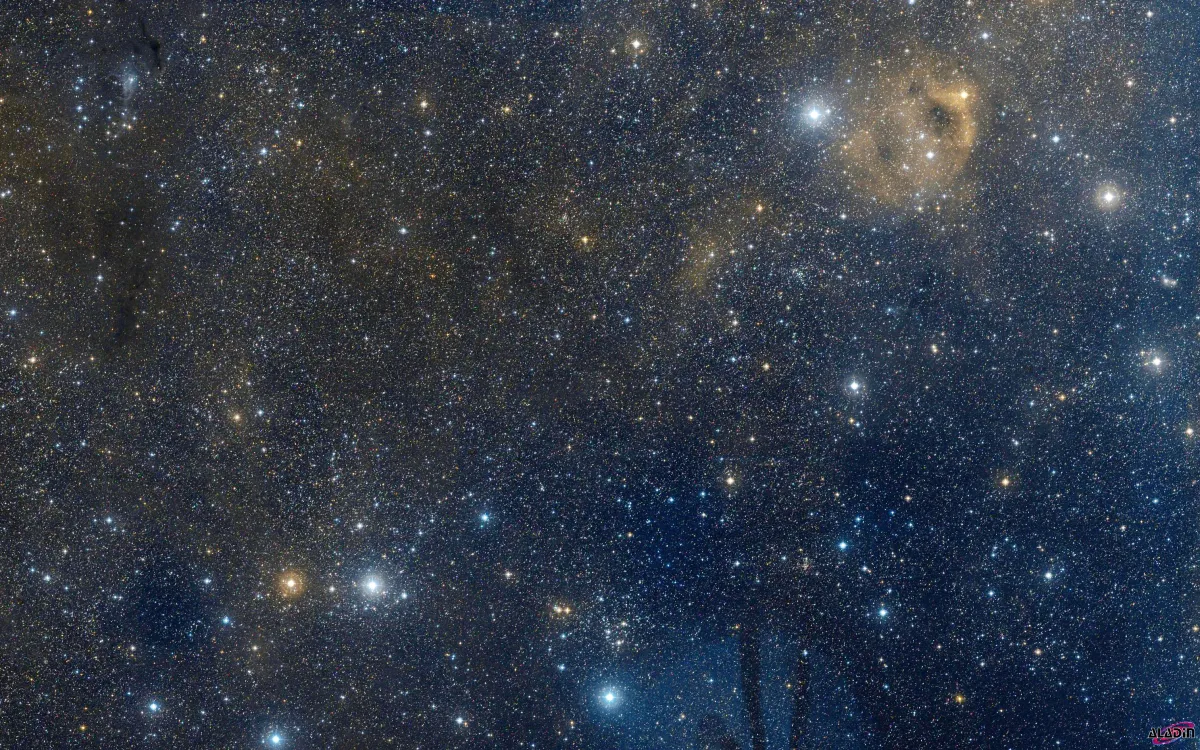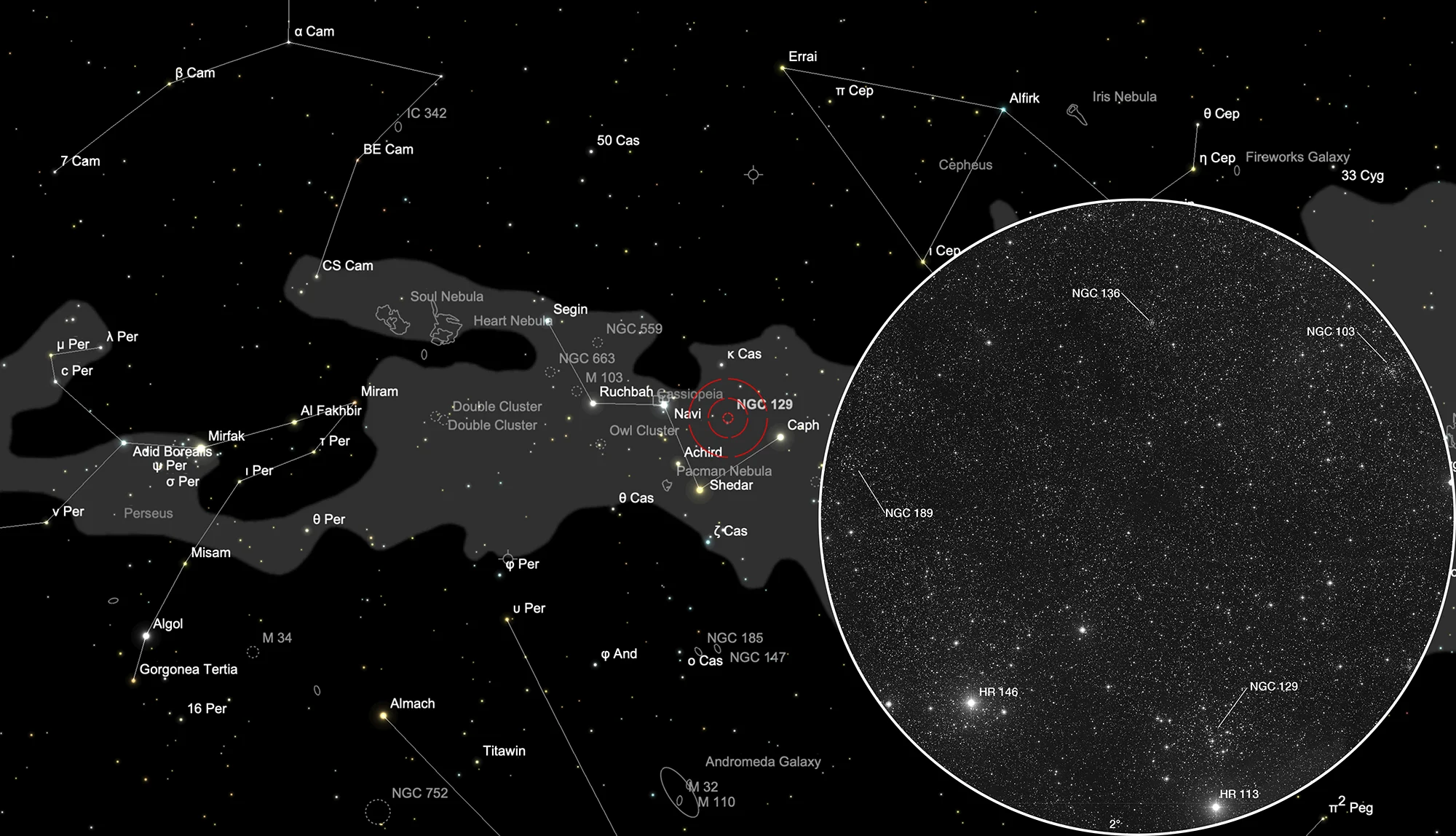Open Clusters NGC 103, 129, 136, 189

History
Caroline Herschel discovered on 27 September 1783 the cluster known today as NGC 189 using her 4.2-inch comet-seeker reflector. She entered it as number 12 in her discovery log and noted: «About 1° south of the above cluster [NGC 225] a faint nebula surrounded with a great number of both large and small stars». William Herschel made no observations and John Herschel, not knowning his aunt's discovery log, independently discovered the cluster on 27 October 1829 and recorded it as h 36 with the remarks: «Cluster, Large; pretty rich; irregular round; 8' diameter; straggling; *s 11...15m.». Dreyer credited John Herschel with the discovery in the NGC. [364, 466]
Using his 18.7-inch speculum reflector William Herschel discovered on 26 November 1788 the cluster known today as NGC 136. He then cataloged it as VI 35 and noted: «A small cluster of very faint, exceedingly compressed stars about 1' diam. The next step to an easily resolvable nebula.» [464] On 16 December of the same year he discovered another open cluster, which he logged as VIII 79 with the remarks: «A coarsely scattered cluster of large stars, mixed with smaller ones, not very rich.» That cluster received in 1888 by Dreyer its designation NGC 129. [313, 465]
John Herschel discovered on 5 October 1829 the cluster known today as NGC 103. He observed with his 18¼-inch reflector and logged the cluster as h 20. He wrote: «Pretty small, pretty compressed cl; 3' diam; st 11...18m in 2 or 3 principal branches. If this be VI 35, there must be a mistake in my father's obs or mine of 6m in RA.» [466] He was wrong, but the first observation of this cluster was made by his father on 26 November 1788 when he noted «clustering, small stars, considerable rich». But he did not assign it a discovery number. [364]
Physical Properties
| Name | RA | Dec | Type | bMag | vMag | Dim | MD | Dreyer Description | Identification, Remarks |
|---|---|---|---|---|---|---|---|---|---|
| NGC 103 | 00 25 17.3 | +61 19 19 | OCL (II2p) | 9.8 | 5 | 1.100 | Cl, pS, pC, st 11…18 | h 20; GC 51; OCL 291 | |
| NGC 129 | 00 29 58.0 | +60 12 42 | OCL (IV2p) | 6.5 | 12 | 1.625 | Cl, vL, pR, lC, st 9…13 | WH VIII 79; h 24; GC 63; OCL 294 | |
| NGC 136 | 00 31 30.7 | +61 30 33 | OCL (II2p) | 11.5 | 11.5 | 1.5 | 5.220 | globular, vF, S, eC | WH VI 35; GC 68; OCL 295 |
| NGC 189 | 00 39 35.6 | +61 05 42 | OCL (III2p) | 8.8 | 5 | 1.300 | Cl, pL, R, st 11…15 | h 36; GC 93; OCL 301 |
Finder Chart
The open clusters are located in the constellation Cassiopeia and is on 2 October in opposition to the Sun. From your location they can best be seen in the months June to February.
